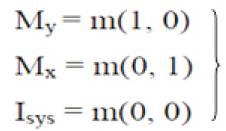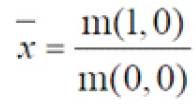
Real Time Video Surveillance is becoming increasingly important in the security of forest nowadays. Many efforts have been made in this field, to detect and track the human and human activities in scene and recognize simple motion such as walking and running. Real time Video surveillance is an alternative attemp to prevent the events to happen (or reduce their chances). In this paper we present a real-time surveillance [3] system framework for recognizing complex activities in the defined area with distributed IP-cameras. In our system we detect moving objects in the scene [III] and use tracking algorithm [IV] to record activities for further analysis. Compared with the traditional surveillance system, an IP based distributed system surveillance offers much better flexibility in video content processing and transmission [5]. At the same time, it, also, can easily implement advanced features such as real time transmission of video and audio if connected through known ip address. Real time videos from distributed cameras can also be transmitted.
The main contribution of this work is the integration of surveillance system with an alert system that not only provides security but also alerts the user in real times using face recognition [2]. If any person crosses in front of any of your camera, the software will alert you. Immediately, an SMS/Email is sent to the control room regarding the intrusion such that the authority can open the application in his cell and view the snapshot of the event. Also, an alarm is activated at the PC's end to alert the people around regarding intrusion. This application allows the user to track the activities happening at a particular location, by taking the snapshots of the video recorded through IP Camera in a PC. An IP camera is a type of digital video camera commonly employed for surveillance, and which unlike analog Closed Circuit Television [5] (CCTV) cameras can send and receive data via a computer network and the Internet and store these snapshots as images in the Database.
The system presented in this project is a Distributed and real-time surveillance system [3], capable of analyzing video streams. These streams are continuously monitored in specific situations for several days, learning to characterize the situations taking place there. This system also infers whether events present a threat that should be signaled to user. The concept of this system is to detect security breaches and alert the user about it through SMS and mail. The system is basically implemented at small level using an IP camera for capturing video and then motion detection is performed and viewed through internet. Security breach when identified, is immediately alerted in the form of SMS, and Emails are sent to the user.
Motion detection [6] is carried out as follows:
Let's assume that each pixel has intensity (I1, I2… In) and a (x, y) coordinate ((x1, y1), (x2, y2)... (xn, yn)), as shown in Figure 1.
The sum of all the pixel moments around the y-axis can be written as:

The pixels' moments around the x-axis are:

The total intensity of the system (shape) is the sum of the intensities of its pixels:

Knowing Isys and My allows us to obtain the distance of the shape from the y-axis:

In a similar way, the distance of the shape from the x-axis is:

a) The ones needed for the center-of gravity calculation (m (0, 0), m (1, 0), m (0, 1)) are retrieved with the necessary p and q values.

The m () moments Function Takes Two arguments, p and q, which are used as powers for x and y.



m() function calculate the center-of-gravity point as x, y, which it returns as a Point object.
If the returned Point object is more than the decided threshold then it is detected as motion as shown in Figure 2.

Figure 1. Intensity distribution of image

Figure 2. Motion Detection
Face Recognition [2] is carried out as follows:
Step 1) Create Training Images which are to be stored along with designated name of the person, with different facial expression.
Step 2) It is important that the training images should be cropped and orientated in a similar way, so that the variations between the images are caused by facial differences rather than differences in the background or facial position.
Step 3) The training process creates eigenfaces (also called as ghost faces) which are composites of the training images which highlight elements that distinguish between faces as shown in Figure 3.
Step 4) The idea is that a training image can be decomposed into the weighted sum of multiple eigenfaces, and all the weights are stored as a sequence as shown in Figure 4.
Step 5) The weights can now be viewed as the image's coordinates in the eigenspace.
Step 6) New picture is captured and new face is decomposed into eigenfaces, with a weight assigned to each one denoting its importance.
Step 7) The resulting weights sequence is compared with each of the weights sequences for the training images, and the name associated with the 'closest' matching training image is used to identify the new face as shown in Figure 5.

Figure 3. Training image decomposed into multiple eigenfaces

Figure 4. Captured image decomposed into multiple eigenface

Figure 5. Recognized image after matching with database training image
Distributed smart camera based surveillance systems significantly contribute to situation awareness. Such systems transform video surveillance from a data acquisition tool to information and intelligence acquisition systems. Real-time video analysis provides smart surveillance systems with the ability to react to an activity in real-time, thus acquiring relevant information at much higher resolution. The long-term operation of such systems provide the ability to analyze information in a spatiotemporal context. As such systems evolve, they will be integrated both with inputs from other types of sensing devices and also with information about the space in which the system is operating, thus providing a very rich mechanism for maintaining situation awareness in remote area such as forest.